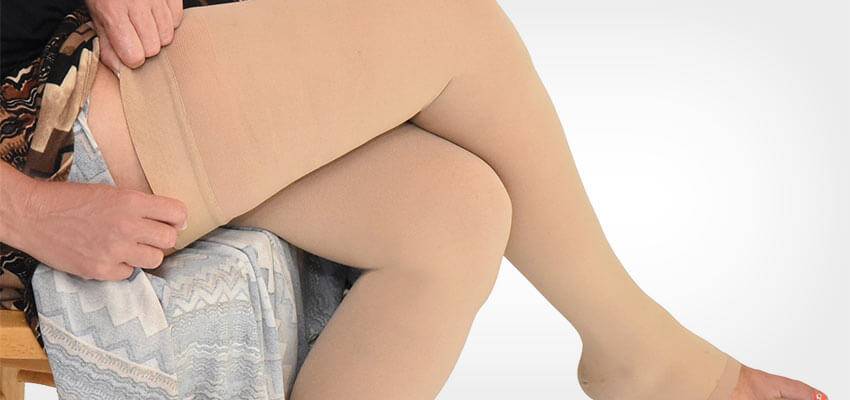
Using Compression Socks to Combat Varicose Veins
If you’ve stumbled upon this article, chances are you’re dealing with varicose veins or know someone who is. You’re looking to find solace in a product or varicose vein treatment that’ll make you feel better, and take a bit of the pain away. Maybe you’re someone looking to avoid any future complications, or maybe you’re someone too busy to make an appointment with a specialist for the time being.
What You Can Do to Fight Varicose Veins
One of the primary things you can do to combat the discomfort of varicose veins is drinking the proper amount fluids throughout your day and elevate your legs at the end of the day. If you work on your feet all day, elevation when you get home is extremely important.
When your veins aren’t properly functioning, you may have varicose veins. Typically, you’ll see these in the lower portion of the leg, and their main defect is that the valves don’t cut off properly, and the blood doesn’t continue towards the heart. When the veins get “clogged” with blood, they become squiggly looking lines in the leg.
It’s not all appearance, though, as varicose veins can be quite painful. When they’re left untreated, you are at a risk for complications. If you end up bumping that area of skin against something, you could bleed quite a bit. You may be susceptible to blood clots too, when not treated properly, and you may also see a bit of pain and inflammation. More swelling in the leg could lead to deep vein thrombosis, and even pulmonary embolism – all linked to blood clots and side effects of varicose veins. Seeking timely Leg Vein Swelling treatment is crucial not only to alleviate pain but also to prevent potentially serious medical complications.
The Usage of Compression Socks
Any type of sock or sleeve that compresses uses elastic hosiery, and helps by compressing on the arteries on the surface, promoting better blood flow. Before you get out of bed, you’ll want to put the compression socks on, and then put your feet down to begin your day. In doing so, you’ll be able to make sure the valves are in the right spot, and encourage better blood flow throughout your legs.
You shouldn’t think that the tighter the compression sock, the better the blood flows, as you may actually constrict even more. What to know about compression socks:
- Anti-embolism compression socks are used for those that are bedridden; compression level is anywhere between 8-18mmHg.
- Gradient compression socks use a tapered compression method, providing the tightest compression in the ankles; compression level is between 15-20 mmHg, or higher.
- If you’re lying in bed, you’ll want to use anti-embolism compression socks.
- If you’re up on your feet and ambulatory, you’ll want to use the gradient / tapered compression socks.
It’s worth mentioning that wearing compression socks only bring you short term relief, and doesn’t act as a long-term solution.
